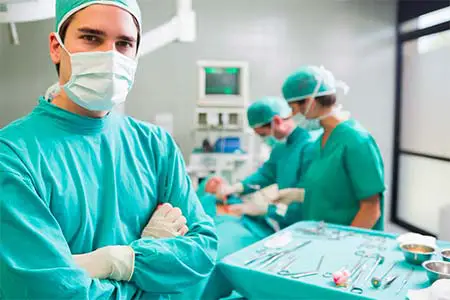Technology has helped to improve surgical outcomes, but there’s still a lot of work to be done before it replaces the skills of surgeons and operating room teams.
Smart operating theatres have been designed to integrate a variety of medical tools into one system, ensuring greater safety for both the patients and the staff.
Non-Invasive Procedures
In some cases, a non-invasive procedure may be the best choice. Whether it’s pain medicine, ultrasound treatment, or physical therapy, these treatments don’t require cutting through your skin.
In other cases, surgeons may use a minimally invasive technique to perform a surgical procedure. This type of surgery requires small incisions and uses specialized equipment to examine the body.
This is a great way to reduce the damage to your tissues during a procedure and ensure faster recovery. It is also often cheaper and less traumatic than open surgery.
Another minimally invasive procedure is neuroendoscopy, which is used to examine the brain. This procedure involves a small incision (less than an inch) and a specialized endoscope with high resolution video cameras.
These procedures are usually performed in a hybrid operating room that combines the technology of image guided surgery with traditional open surgical techniques. This makes it easy for physicians to switch between procedures as needed, and helps them manage their workflows more efficiently.
Voice-Controlled Surgical Technology
The use of voice-controlled surgical technology in the operation theatre has been shown to increase safety and efficiency. For example, voice-controlled cameras can reduce camera viewpoint adjustment errors and improve visualization of surgical sites.
Likewise, the use of voice-controlled operating tables can help to minimize unnecessary human interaction with the support equipment. This saves time, effort and operating room resources.
A number of voice-controlled surgical technologies have been developed in recent years. These include wearable pedals, voice (pre-operative training required), head movement and navigation tracking.
However, most of these technologies are master-slave controllers with limited autonomous behaviors, leading to poor efficiency. To overcome this issue, a voice-controlled robotic digital microscope from Synaptive Medical was designed to assist surgeons in the operating room by automatically adjusting its camera viewpoints.
The system uses endoscope motion analysis and offline grammar rule library design to obtain direction instructions from the surgeons’ voice. These instructions are displayed on the surgeon’s operation interface in real time.
Augmented and Virtual Reality
Surgeons are already using augmented reality (AR) to help them visualize their patients’ surgical plans and procedures. These tools allow surgeons to overlay 3D models of patient’s anatomy onto the screen in real-time.
This technology can help reduce errors and save a lot of time in the operating room. It also helps doctors to get precise pre-surgical images of their patients in order to carry out surgeries effectively and safely.
The technology can also be used for training medical students on complex surgeries. This allows the students to practice critical life-saving surgeries in a risk-free environment.
Several companies are developing AR-based solutions that can be integrated into the operating room to aid the surgeons. This can include visualisation of X-rays and ultrasound imaging, blood pressure monitoring, pulse rate and anesthetic concerns all in one place.
Currently, AR is not widely available for surgery as it requires an advanced and high-powered microcomputer to drive its function. However, this technology is expected to grow over time and become commonplace in the future.
Modular Operating Facility
Modular operating facility is a type of sterile surgical room that allows doctors to carry out complicated procedures without any hassle. Often, these rooms are installed in hospitals as the need for additional capacity arises due to a temporary fall in activity or a shortage of clinical staff.
The technology used in these operation theatres is designed to expedite medical procedures and place a premium on the safety of patients. This makes them a necessity in the healthcare industry.
A well-equipped modular operating theatre can save money in the long run as it helps medical professionals to complete a wide variety of surgeries and procedures in the same location. It also allows the medical team to collaborate comfortably and efficiently without any hassle.
The air in a modular operating theatre is filtered through HEPA filters to reduce bacteria growth and ensure a safe environment. It is recalculated through ceiling suspended laminar air flow to maintain the desired temperature and humidity.

